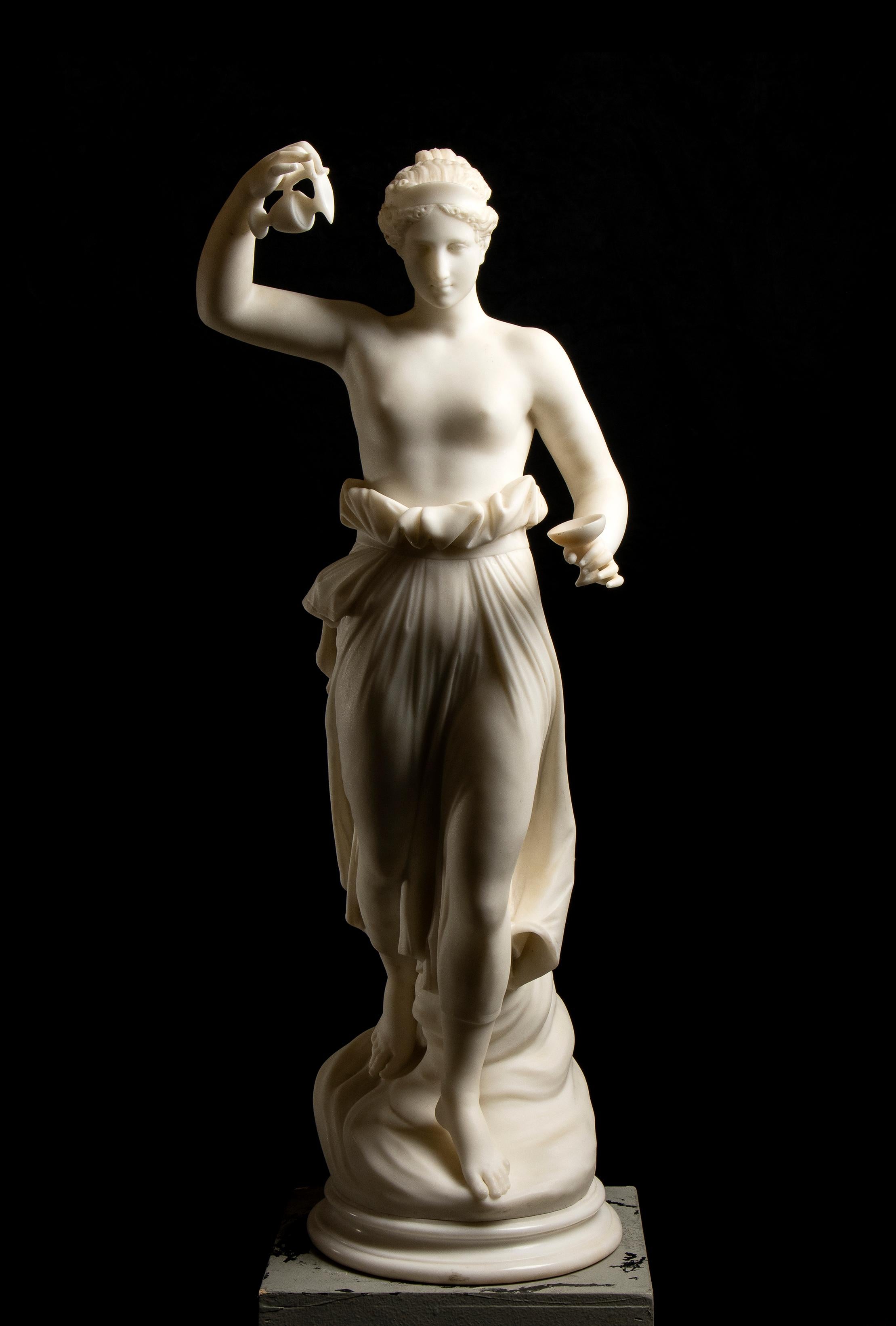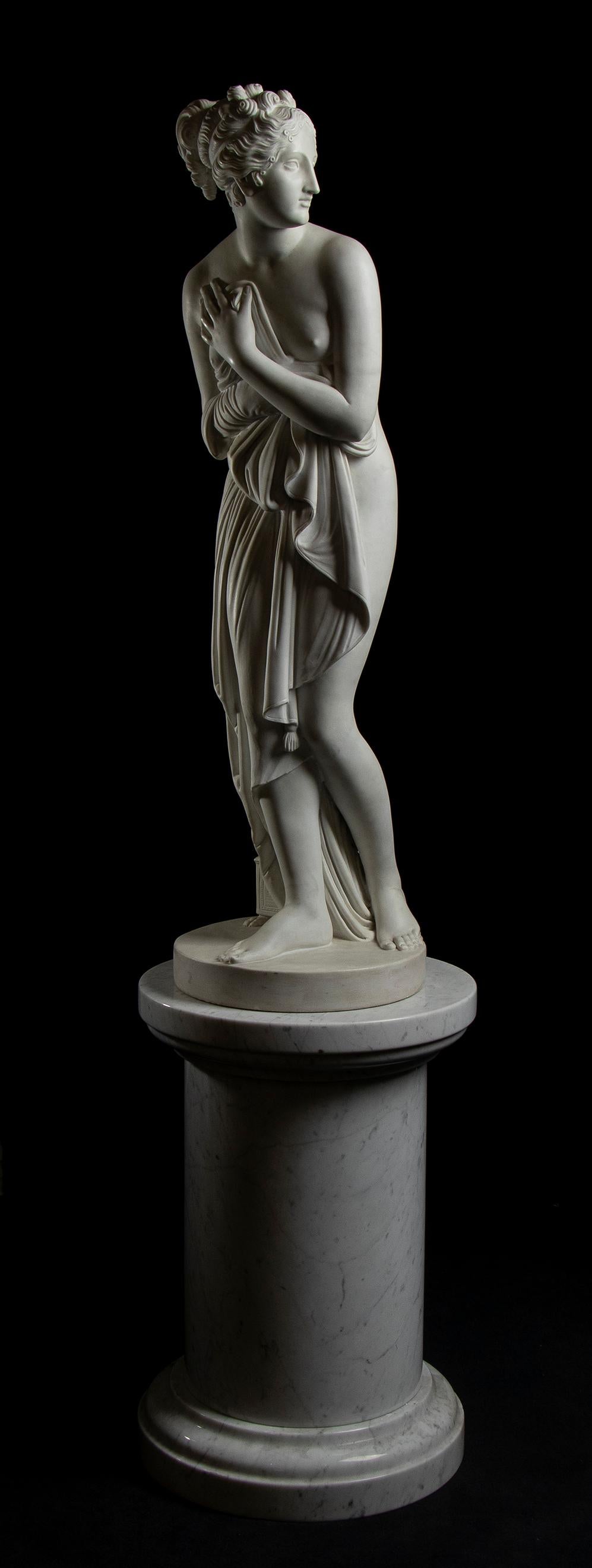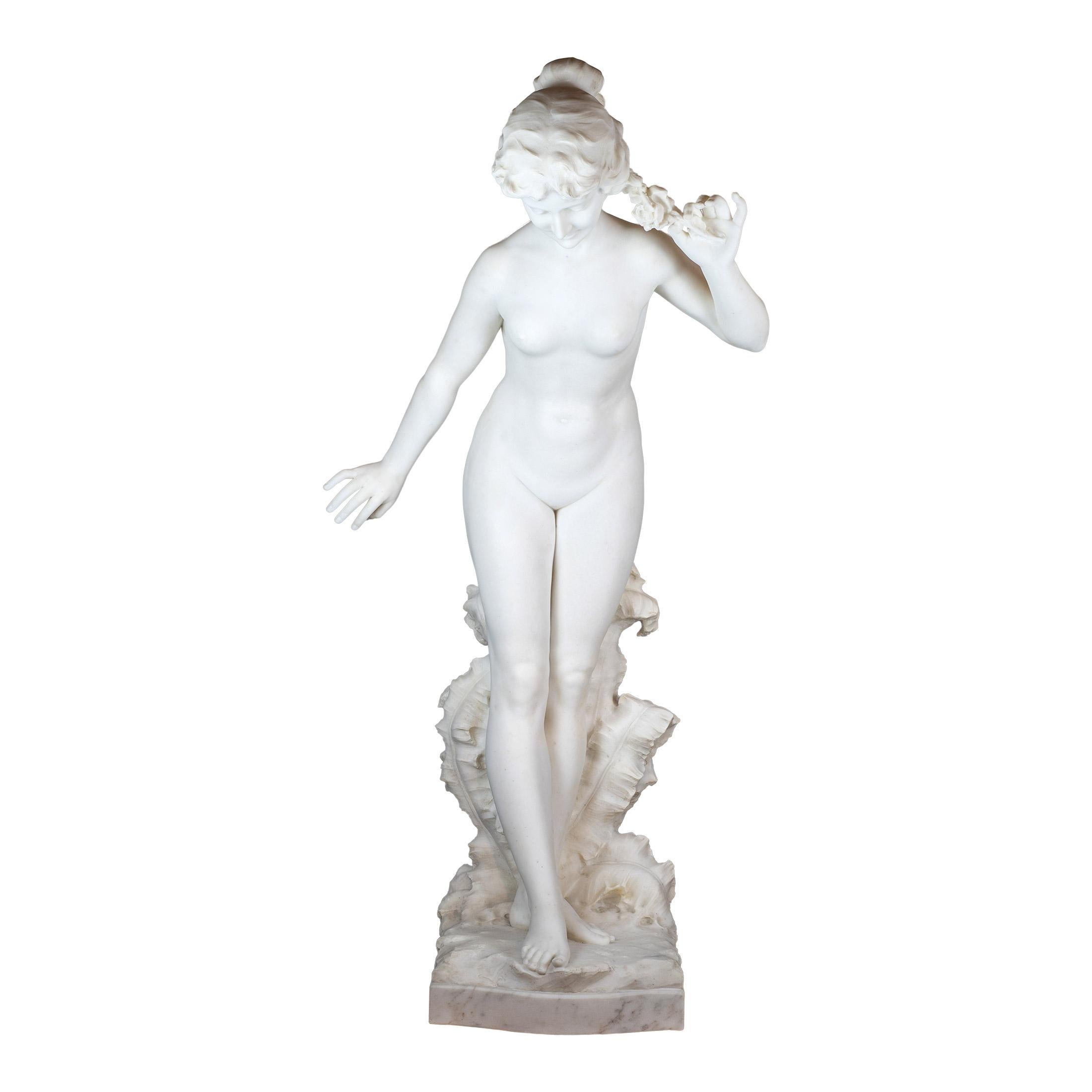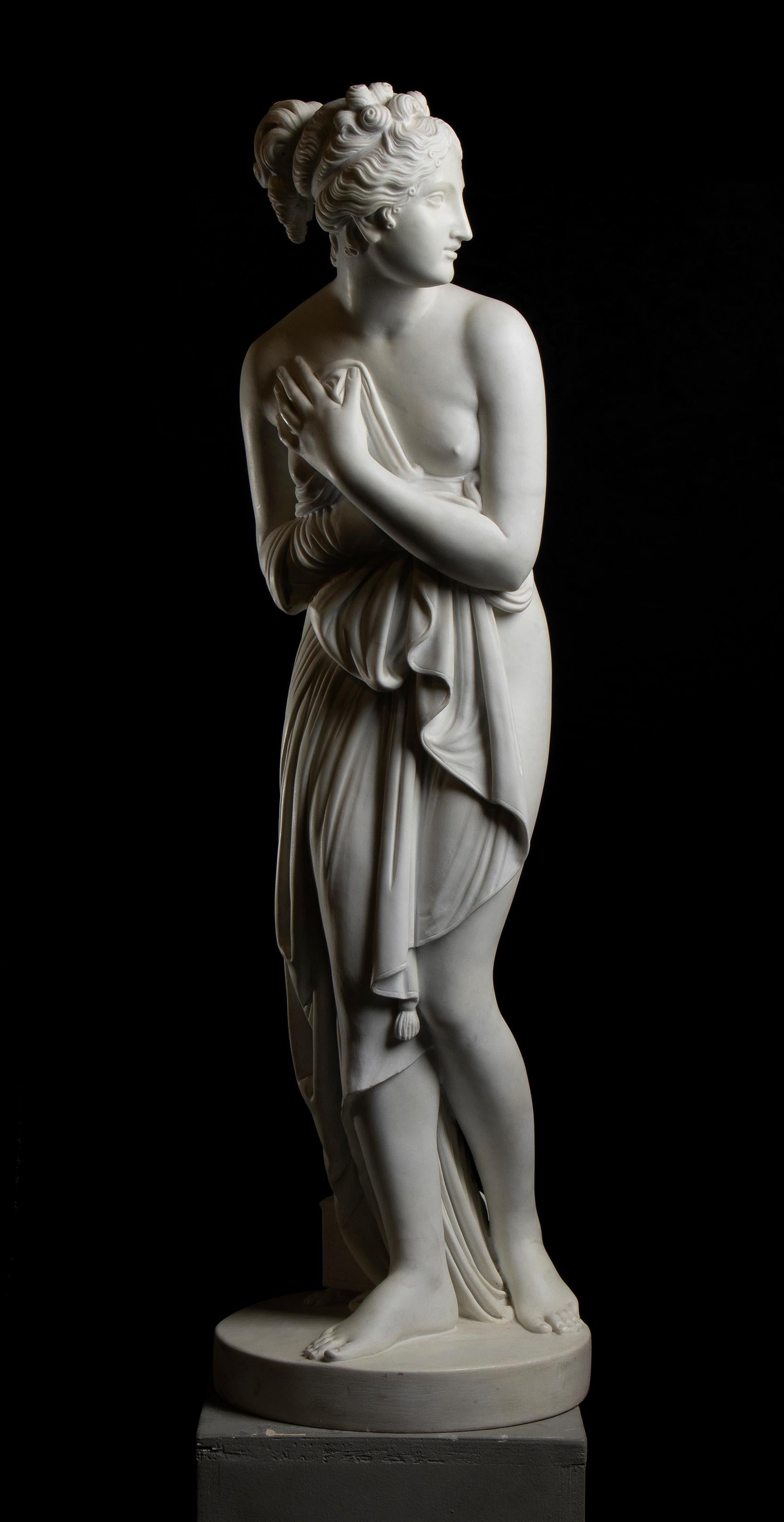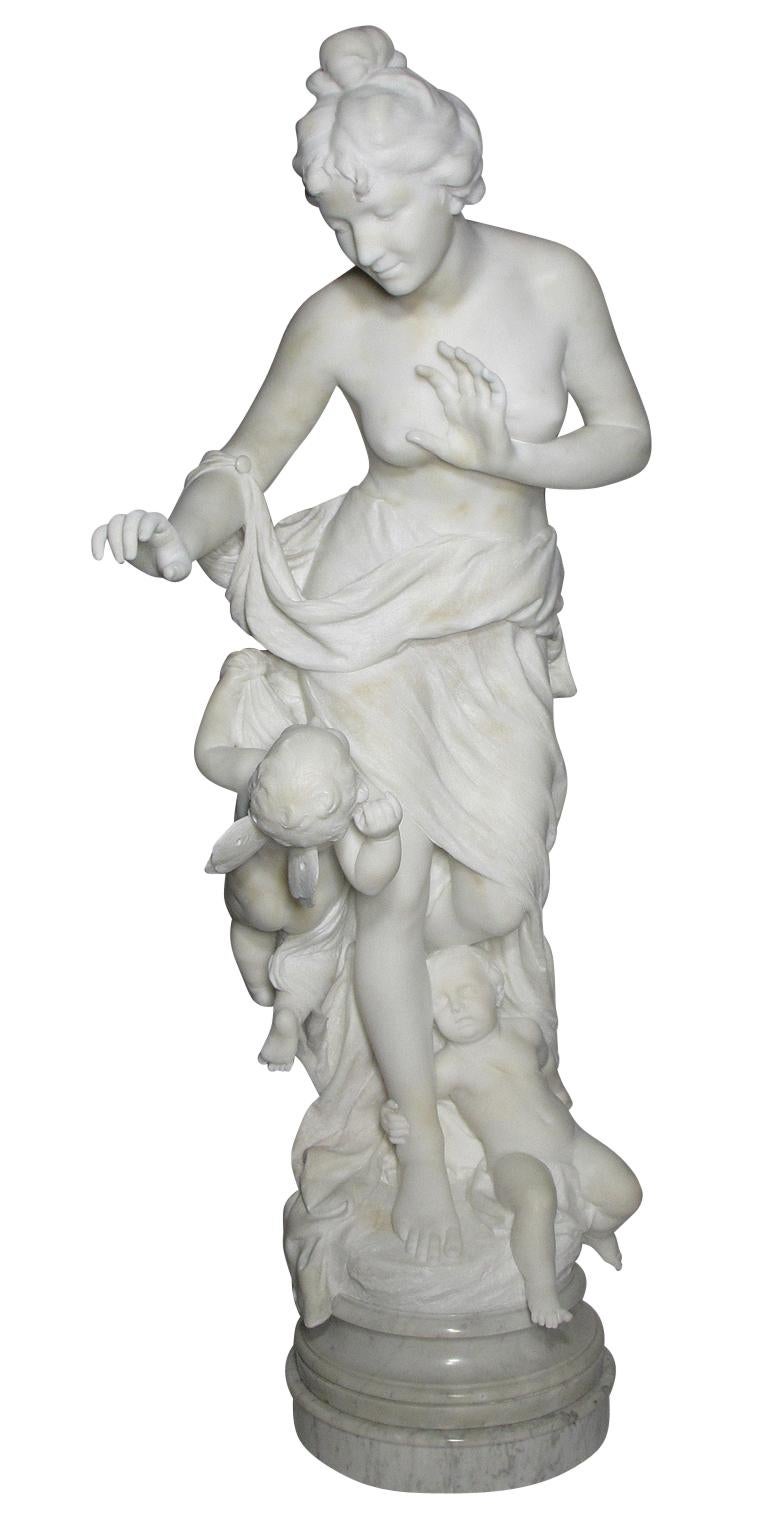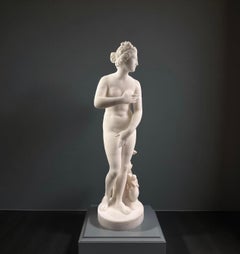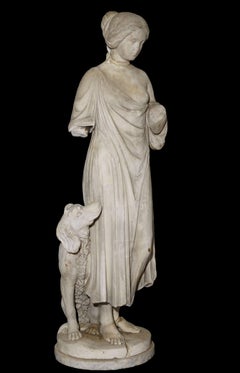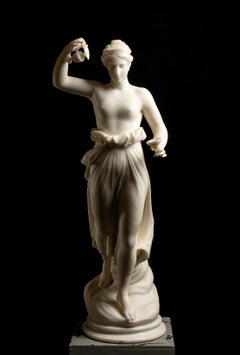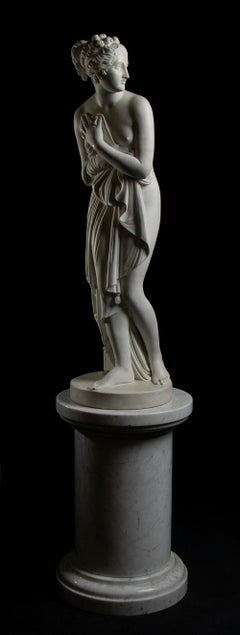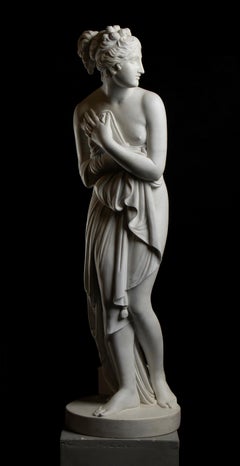Items Similar to "La Danza", Grande scultura in Marmo bianco di Carrara XIX secolo
Want more images or videos?
Request additional images or videos from the seller
1 of 11
Antonio Giovanni Lanzirotti"La Danza", Grande scultura in Marmo bianco di Carrara XIX secolo1860
1860
$14,899.02
£11,032.23
€12,500
CA$20,488.39
A$22,785.07
CHF 11,926.93
MX$277,950.15
NOK 149,866.26
SEK 140,968.56
DKK 95,170.47
About the Item
Antonio-Giovanni Lanzirotti, "La Danza", grande scultura in marmo bianco di Carrara, firmata AG Lanzirotti sulla base.
Antonio Giovanni Lanzirotti, nato a Palermo il 9 maggio 1839 e morto il 28 febbraio 1911, è uno scultore italiano che lavorò in Francia e in Italia. Lottò per l'indipendenza della Sicilia, poi dell'Italia. Ed è stato con Auguste Clésinger il direttore dei laboratori di fotoscultura della Société Générale de Photosculpture de France.
Completò i suoi studi in Italia e poi si recò a Parigi, dove fu allievo di Joseph Michel Ange Pollet.
La sua prima opera scultorea fu l'Educazione di Bacco, esposta all'Esposizione Universale di Parigi del 1855. Nel 1858-1859 presentò al prefetto della Senna lo schema di un progetto per un “gruppo allegorico in onore di Sua Maestà l'Imperatore Napoleone III, che potesse essere collocato tra i giardini del cortile del nuovo Louvre (place Napoléon).
Nel 1863 fu chiamato a Torino, dove il re Vittorio Emanuele II ordinò le statue del conte Verde e del duca Vittorio Amedeo I. Inviò a Parigi le statue de La Pensierosa (Il pensatore) e La Schiava grisea (Lo schiavo greco). . Il primo ora decora una nicchia al piano terra dell'ala nord della Cour Carrée del Museo del Louvre. E il secondo fa parte delle collezioni del Museo di Belle Arti Jules-Chéret, a Nizza.
Nel 1860 Lanzirotti aderì al movimento di Giuseppe Garibaldi e fu fatto prigioniero a Capo Corso. Fu imprigionato per due mesi a Gaete, poi tornò a Parigi. Lì scolpì: Amore punito; La Danza (La Danza); il mausoleo del conte Tyzhieviez e una bagnante che espose al Salon. Ha anche scolpito Il Piacere (Piacere) e La Follia (Follia).
Realizzò anche numerosi busti e ritratti, tra cui quelli di Cassagnac, Émile de Girardin, il dottor Armand Trousseau, Beaumarchais e il re Umberto I d'Italia.
Nel 1867 fu direttore dei laboratori di fotoscultura della Société Générale de Photosculpture de France, insieme ad Auguste Clésinger.
Lanzirotti fu onorato da numerose accademie, e ricevette le insegne della Croce di Cavaliere dell'Ordine dei Santi Maurizio e Lazzaro e le insegne dell'Ordine di Isabella la Cattolica. Fu anche inserito nell'Ordine della Corona d'Italia.
Lanzirotti è riconosciuto come uno dei migliori scultori del suo tempo. “La Danse”, realizzata durante il suo soggiorno parigino, raffigura una giovane donna seminuda che danza avvolta in un drappo che lascia intravedere il seno; come in un fermo immagine, Lanzirotti la intrappola nel marmo in una complicata posa di torsione, con le braccia alzate e il drappo che si muove e freme nel vento.
In ottime condizioni.
- Creator:Antonio Giovanni Lanzirotti (1830 - 1921, Italian)
- Creation Year:1860
- Dimensions:Height: 36.62 in (93 cm)Width: 12.6 in (32 cm)Depth: 10.24 in (26 cm)
- Medium:
- Movement & Style:
- Period:
- Condition:Eccellenti condizioni compatibili con l'usura dovuta all'epoca.
- Gallery Location:Pistoia, IT
- Reference Number:1stDibs: LU2746214766882
About the Seller
4.5
Vetted Professional Seller
Every seller passes strict standards for authenticity and reliability
Established in 1997
1stDibs seller since 2024
16 sales on 1stDibs
- ShippingRetrieving quote...Shipping from: Pistoia, Italy
- Return Policy
Authenticity Guarantee
In the unlikely event there’s an issue with an item’s authenticity, contact us within 1 year for a full refund. DetailsMoney-Back Guarantee
If your item is not as described, is damaged in transit, or does not arrive, contact us within 7 days for a full refund. Details24-Hour Cancellation
You have a 24-hour grace period in which to reconsider your purchase, with no questions asked.Vetted Professional Sellers
Our world-class sellers must adhere to strict standards for service and quality, maintaining the integrity of our listings.Price-Match Guarantee
If you find that a seller listed the same item for a lower price elsewhere, we’ll match it.Trusted Global Delivery
Our best-in-class carrier network provides specialized shipping options worldwide, including custom delivery.More From This Seller
View AllLarge Neoclassical White Marble Sculpture Venus Italica mid-19th century
Located in Pistoia, IT
Venus Italica, imposing sculpture in white Carrara marble, mid-nineteenth-century Roman atelier.
Antonio Canova made several sculptures depicting Venus. The first was made as compen...
Category
Mid-19th Century Italian School Figurative Sculptures
Materials
Marble
White Marble sculpture Venus dei Medici Italy Florence mid-19th century
Located in Pistoia, IT
White Carrara marble sculpture depicting the Medici Venus, Florentine workshop, second half of the 19th century.
The Venus de' Medici is an original Greek Hellenistic marble statu...
Category
Late 19th Century Italian School Figurative Sculptures
Materials
Marble
Venus Colca Neoclassical Marble Sculpture early 19th century
Located in Pistoia, IT
Crouching Venus, neoclassical Carrara marble sculpture, early 19th century.
An 18th-century English tourist to Florence wrote that of all the Venuses in the Uffizi, "only one grace...
Category
Early 19th Century Italian School Figurative Sculptures
Materials
Marble
Large Italian Neoclassical Marble Sculpture Allegory 18th century
Located in Pistoia, IT
Impressive neoclassical Carrara marble sculpture depicting the Allegory of Friendship and Loyalty, second half of the 18th century.
The sculpture depicts Friendship as a classical ...
Category
Late 18th Century Italian School Figurative Sculptures
Materials
Marble
Large Orientalist Bust in Marble of Armida French School 19th century Signed
Located in Pistoia, IT
Zacharie Rimbez (active between 19th and 20th centuries). White marble Orientalist bust depicting Armida, second half of the 19th century.
Armida is a Muslim sorceress, a charact...
Category
Late 19th Century French School Figurative Sculptures
Materials
Marble
Statuary marble bust of Venus Italica second half of the 19th century Signed
Located in Pistoia, IT
Statuary white marble bust of Venus Italica signed Antonio Frilli - Florence, Italy, second half of the 19th century. Measurements H total cm 50 H bust cm 39 W cm 30 D cm 24 This l...
Category
19th Century Italian School Figurative Sculptures
Materials
Marble
You May Also Like
Antonio Canova Ebe Aprés Ebe White Marble Sculpture 19th Century Italian
By Antonio Canova
Located in Roma, IT
An important grand tour Antonio Canova Ebe (Aprés), carved in white marble by an Italian sculptor artist in the 19th century from a block of white marble.
The work depicts the go...
Category
19th Century Other Art Style Figurative Sculptures
Materials
Marble
$29,144 Sale Price
30% Off
Antonio Canova (After) Marble Sculpture Of Venus Italica On Marble Base
By Antonio Canova
Located in Roma, IT
a superb scale size of the Venere italica, the famous and notable sculpture carved by Antonio Canova in the 19th century standing on circular Carrara marble base.
At the top of his ...
Category
19th Century Other Art Style Figurative Sculptures
Materials
Marble
Italian Marble Sculpture Statue of a Nude Beauty by Aristide Petrilli
Located in New York, NY
ARISTIDE PETRILLI
Italian, (1868-1930)
Flora (Allegory of Spring)
Signed Prof Pedrilli; Galleria Bazzanti Firenze
49 inches high (Statue); 32 3/4 x 19 1/4 inches (Pedestal)
Notes: Finely carved Italian carrara marble of a nude beauty signed Prof Petrilli...
Category
Late 19th Century Figurative Sculptures
Materials
Marble
Antonio Canova (After) Marble Sculpture Of Venus Italica Uffizi Museum 19th
By Antonio Canova
Located in Roma, IT
a superb scale size of the Venere italica, the famous and notable sculpture carved by Antonio Canova in the 19th century. At the top of his notability and influence the King Ludovico...
Category
19th Century Other Art Style Figurative Sculptures
Materials
Marble
$27,479 Sale Price
30% Off
Italian 19th-20th Century Life-Size Marble Sculpture Titled "Searching for Love"
Located in LA, CA
A very fine museum quality Italian 19th-20th century life-size marble sculpture titled "Searching for Love" by Vito Pardo (Italian, born in Venice in 1872) Depicting a semi-nude life...
Category
19th Century Romantic Figurative Sculptures
Materials
Marble, Bronze
Carrara Marble Sculpture "Schiava" Attributed to Giacomo Ginotti, Italy, C. 1890
Located in Buenos Aires, Buenos Aires
Carrara marble sculpture "Schiava" attributed to Giacomo Ginotti (1845-1897). Italy, late 19th Century.
Category
Antique Late 19th Century Italian Neoclassical Figurative Sculptures
Materials
Carrara Marble
